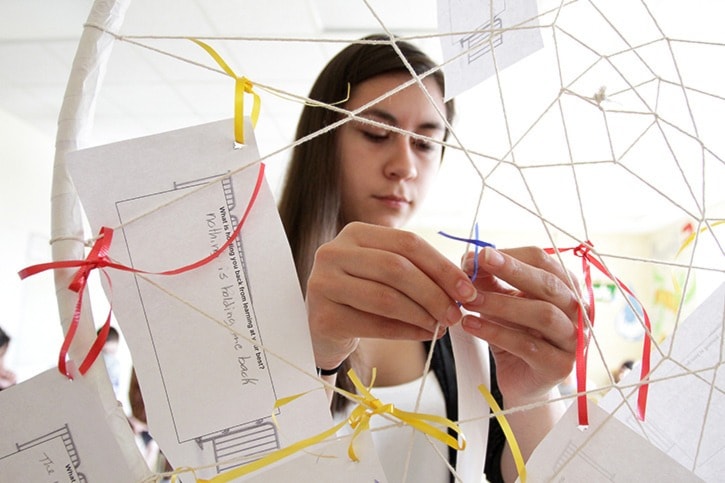Wolf Creek Public Schools (WCPS) is taking inclusive learning to new levels by seeking feedback from First Nations students on how their education looks in relation to their culture.
In what was probably the first effort with a school division and its First Nations elders and students, WCPS leaders worked closely with them Friday, June 19 at the old Ponoka Elementary School building to determine how their education looks from the perspective of their culture and beliefs.
In keeping with what the day was called, Nitohtahwin, or gathering, there were special breakout sessions where students, with the help of elders and WCPS facilitators, tackled four areas of development: mind, spiritual, physical and emotional.
A sharing circle also gave students an opportunity to speak up on challenges they face.
Four areas of focus:
- Mind looked at questions of “Are you able to understand what teachers are giving you?”
- Spiritual took into consideration what school looks like for First Nations students if they are, or are not, learning at their best.
- Physical looked at cultural questions on if students feel like they belonged or did not.
- Emotional gave students an opportunity to talk about serious family or personal issues and tried to give students ways of dealing with grief and loss.
Suicide rates on First Nations communities is high and this was one area elders and planners worked on closely with students.
Ensuring this first Nitohtahwin went well was important for WCPS, said superintendent Larry Jacob, which is one of the reasons a committee of educators and elders worked closely on its planning.
Jacobs said Nitohtahwin refers to not only gathering together, but to come up with plans of action from it. The meeting was also a celebration of Aboriginal Day, set for Sunday, June 21. “The primary focus is on students discussing literacy and what does literacy look like from the eyes of a First Nations student, ” Jacobs clarified.
With changes in the school curriculum underway, Jacobs said it is important for WCPS to include the perspective of First Nations, Métis and Inuit education (FNMI).
Jacobs said observations from the 30 or more students will help WCPS put together guidelines that help how teaching and learning is done with FNMI students.
Elder Joey Deschamps, who also teaches at the Ponoka Outreach School, helped organize the day. He said it was a significant event and he suggests it shows that WCPS is serious about its desire to work with FNMI students and their culture.
“All these things that Larry talked about; I’m kind of proud of today. It’s kind of historical,” said Deschamps.
He feels WCPS is showing FNMI students, but also non-FNMI students that it is important to take in others’ perspectives. Deschamps added there will be a ripple effect of recent recommendations from the Truth and Reconciliation Commission and he feels younger FNMI students will benefit from them.
After the breakout sessions, there was also a feast that has spiritual importance and during that time no cameras were allowed. Helpers ensured that the food was blessed and they always walked in a clockwise manner when serving the food.
Students’ perspective
Some students who helped organize the day found being part of the sharing circle was important. Jewel Omeassoo said it helped kids who didn’t want to speak out, and gave them a safe place to discuss concerns.
“The aboriginal students were really involved in everything because it was a safe environment for them,” said Omeassoo.
She praised WCPS for acknowledging the First Nations culture.
Kelli Ward enjoyed being included. “It’s really important just to hear from different ethnic cultures. Today allowed the youths to speak.”
The entire day placed great importance in Cree culture and included dancing and drumming demonstrations for Ponoka Elementary School students, who also had a chance to join in on the dancing.
